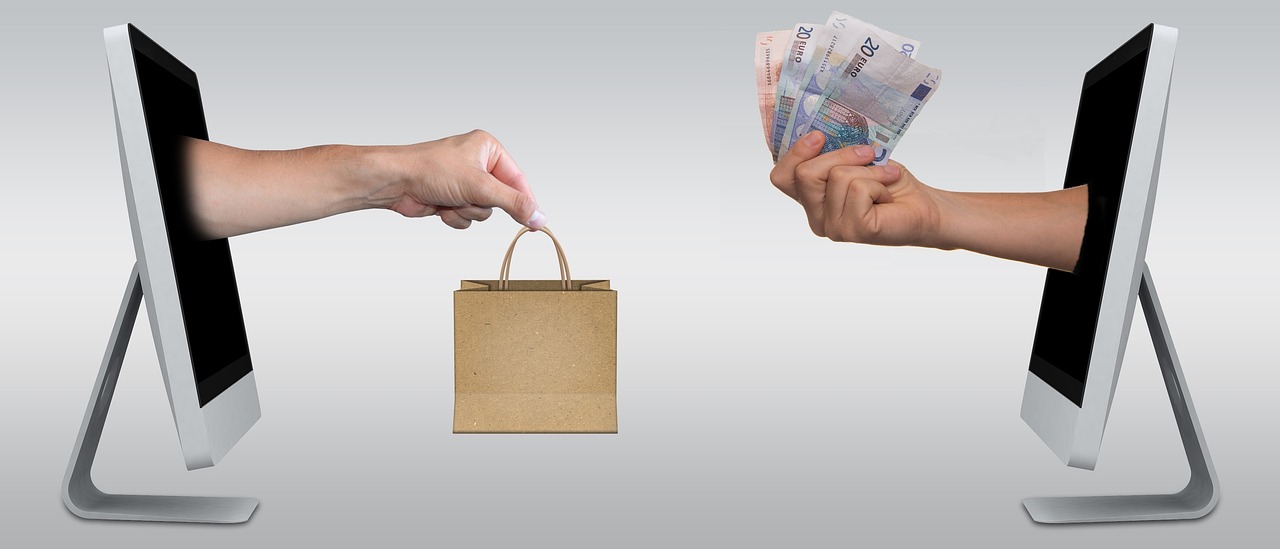The Evolution of Point of Sale (POS) Technology
March 20, 2024 - 11 minutes readThe past, present, and future of point of sale hold unexpected possibilities.

Retail point of sale (POS) is not a new concept. The mechanical cash registers of the 1800s were considered the first true point of sale devices, with materials, payments, and records exchanged simultaneously at the checkout stand. The POS lineage can be traced back even further, to a time when early buyers completed their cash purchases or bartered for goods in open markets. Today, POS technology has made it possible to complete secure electronic sales transactions from almost anywhere, at any time.
Reviewing the features that contribute to modern POS technology allows us to appreciate how far these systems have come, and where they might be headed in the future.
“Point of sale is where you reach 100% of your audience 100% of the time.” – Paul Hudson
The benefits of point of sale (POS) systems
The real-time data, flexibility, and customer service benefits brought by modern POS systems are recognized by vendors and customers alike. As a result, POS systems are now considered a must-have for brick-and-mortar businesses, and their adoption has quickly spread to field sales, pop-up stores, and E-commerce. The many benefits of POS include:
- Multiple payment options: Modern POS systems are distinguished from their cash register predecessors by the ability to accept customer payments using methods like digital wallets, QR codes, PayPal, and contactless payment through near-field communication (NFC).
- Improved efficiency: POS systems improve the overall efficiency of a business by feeding real-time sales data to inventory management software from multiple locations. KPIs related to sales transactions, returns, conversion rates, items per purchase, and sell through rates (just to name a few) are calculated instantly and automatically.
- Improved customer experience: Advanced POS platforms improve the customer experience in both obvious and subtle ways. Self-checkout, easy item lookup, and stored payment methods bring added convenience while advanced marketing tools use POS customer data to create a more personalized customer experience.
6 key milestones in the evolution of point of sale technology
The methods available to pay for goods and services continue to expand, and POS software, systems, and platforms have adapted to the changes. The point of sale market value is expected to reach $42.5 billion by 2027. Over the years, breakthroughs in POS technology have dramatically altered the way we sell, shop, and interact.
1. In the beginning
After almost a century of dominance, the mechanical cash register received an electronic makeover in the late 1970s to automate change calculations for cashiers and simplify credit and debit card transactions, which were exploding in popularity. Retail stores and fast food chains like McDonald’s quickly capitalized on these advancements by incorporating POS card readers and corresponding buttons for each menu item.
Behind the scenes, computer industry giants like IBM were developing the infrastructure needed to connect networks of individual cash registers through a mainframe. This technology foreshadowed the internet and wireless connectivity that would eventually make real-time data and interconnection fundamental POS elements.

2. Electronic point of sale (e-POS)
A major turning point in the evolution of POS technology occurred in the early 1990s with the introduction of Windows and Linux-based electronic point of sale (e-POS) systems. For the first time, intelligence behind the payment terminal allowed businesses to track inventory, price changes, and sales data, rather than simply collecting and storing cash in exchange for goods. Additional features of early e-POS systems included:
- Customizable receipt formats
- User authentication and access controls
- Sales data tracking for individual employees
- Scalability to grow with the business
The development of the first e-POS technology was significant since it set the stage for enhanced reporting and customer relationship management (CRM) practices. Once the internet age began, all POS platforms became electronic as intelligence and connectivity converged into the next generation of technology.
3. Barcode scanning
In the 1970s, the revolutionary idea of using simple patterns of black bars and white spaces to encode item number, manufacturer, and price information on grocery labels simplified the checkout process for retail cashiers and customers for decades to come. Since this earliest application, barcoding has become the constant companion of POS technology.
QR codes presented a more complex 2-dimensional grid that raised the bar in the 1990s by encoding up to 4,296 characters. Most smartphone cameras can read QR codes without additional apps or hardware. This synergy makes barcoding a key element of POS, with the accuracy and flexibility of barcoding technology making rapid order processing and seamless inventory management possible.
4. Mobile POS
Cash registers and other early POS systems could be moved when necessary, but were typically stationary. This inherent lack of mobility limited the possibilities for POS, especially for large retail and field applications with dispersed customers. Handheld devices, tablets, and mobile-friendly solutions converged to make mobile POS a reality in the early 2010’s.
Customers and sales clerks can now enjoy the convenience of on-the-spot checkout using a variety of electronic and contactless payment methods. Wireless technology allows sales and inventory data to be transferred to and from the POS location instantly. At the same time, adherence to PCI payment processing standards and built-in security features keep mobile transactions safe from cyber crimes.
5. Cloud-based POS
Cloud-based POS and software-as-a-service (SaaS) solutions have laid a foundation for many important POS improvements. With applications and data storage no longer tethered to each POS location, any device with internet connectivity can be converted into a POS terminal with real-time order management software. Customer and material information is shared instantaneously to prevent stockouts and elevate quality of service. Cloud-based systems also make it easier to update software and licenses system-wide.
6. Omni-channel commerce
Omni-channel commerce, with the customer experience spread across online, in-person, and mobile platforms, has raised the bar for POS systems tasked with providing a consistent shopping experience regardless of the platform or location. Cloud-based inventory management software and mobile POS have made omni-channel commerce possible by facilitating real-time inventory updates, enabling unified customer profiles, and ensuring efficient order management. Omni-channel versatility is expanded through the integration of E-commerce platforms that allow customers to select from multiple sales channels over the same POS interface.
“Omnichannel means listening and capturing data and behavior from a customer across all channels.” – Loren McDonald
The future of point of sale technology
Point of sale technology has evolved so quickly that it may seem like the zenith has already been reached, but many of the new technologies and features currently being developed for POS applications have the potential to reinvent the industry once again.
- Artificial intelligence: A mobile POS device that can recognize a customer’s voice and instantly personalize sales offerings and payment preferences based on their history might sound like science fiction, but the technology to make it possible has already arrived.
- Biometrics: Password-free authentication methods like facial recognition and fingerprint scanning will simplify POS transactions and improve security by ensuring buyers can no longer use stolen credit card information or digital wallets without verifying their identity.
- No cashier needed: New retail formats like Amazon Go provide us a glimpse into a cashless and cashierless future, as advanced sensing technology tracks items you remove. Your account on file is instantly debited as you sail past the checkout stand.
The evolution of POS: Final thoughts
Most of us would find it difficult to operate the old fashioned cash registers that once populated our checkout stands. The evolution of POS continues to move us further from cash transactions and fixed locations. Modern POS technology combines real-time data from the cloud, bar coding, and mobility to create dynamic new interfaces and improve the customer experience.
The Agiliron all-in-one POS platform allows you to manage orders, customers, and inventory from just one interface, wherever you are. The POS software can also detect connection loss and automatically switch to offline mode, so you never miss a transaction. Popular tools like QuickBooks, Shopify, eBay, and Amazon can be integrated quickly and easily to expand your sales horizons.
Point of sale technology has evolved to accommodate the needs of today’s customers and retailers, and the best is yet to come. Contact us today and let our solution experts explain how the latest POS technology can streamline your operations while delighting your customers.
Tags: Business Management, customer experience, eCommerce, retail